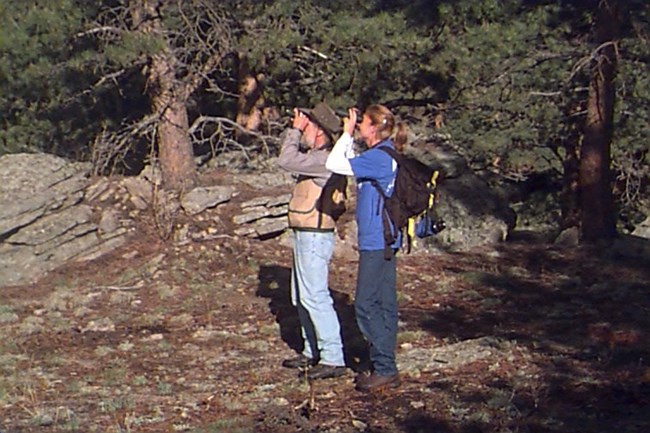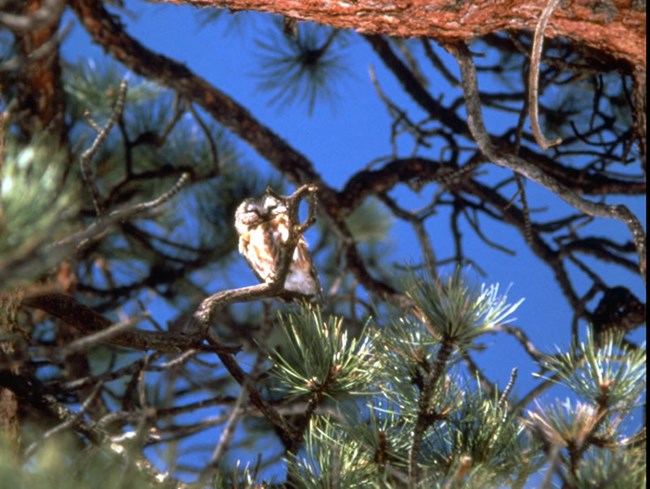
Photo courtesy of Rocky Mountain National Park. Rocky Mountain National Park participates in the National Audubon Society's International Christmas Bird Count each December. The Christmas Bird Count goes on every year throughout North, Central, and South America during one two-week period in December, and it is intended to be a snapshot of the variety, distribution, and, to some degree, the numbers of birds present at that time. The Christmas Bird Count began on Dec. 25, 1900, and the data provided by this traditional event has generated a tremendous amount of scientific information that contributes significantly to the understanding and management of bird populations in the New World. This entirely volunteer effort is based on Count Areas established throughout the Western Hemisphere. Within these Count Areas, volunteers attempt to document all the varieties of birds present by sight or song. While most identification occurs during daylight hours, some volunteers may try to document owls and other night birds by their calls in the very early morning or evening hours.

Photo courtesy of Rocky Mountain National Park The Estes Valley and Rocky Mountain National Park have been one of the areas counted for 63 years. Several teams are organized to run various routes in the park. Most routes are done by about 1:00 p.m. There are a large number of wintering birds in the park and in Estes Park. In 2002, 48 different species were recorded, with 3,451 individuals counted. Frequently seen birds include mountain chickadee, Steller's jay, magpie, mallard, Clark's nutcracker, crow, American dipper, and pygmy nuthatch. Uncommon birds could include great horned owl, American kestrel, Northern shrike, or ruddy duck. Everyone hopes to document a northern shrike, but no promises! The one thing we can promise is that this is a great opportunity to have fun and contribute to a better understanding of the birds of the Western Hemisphere. |
Last updated: March 31, 2012
